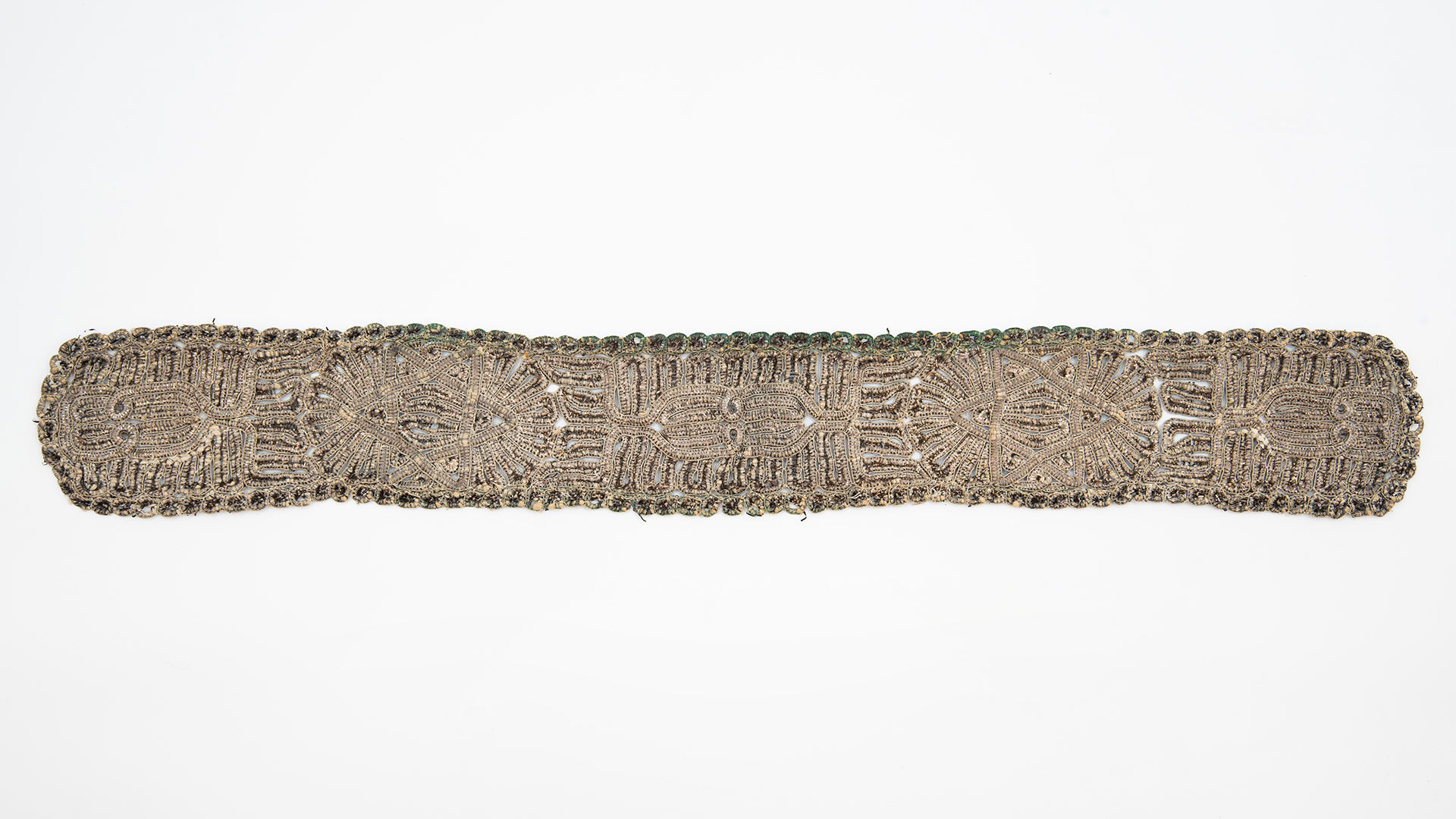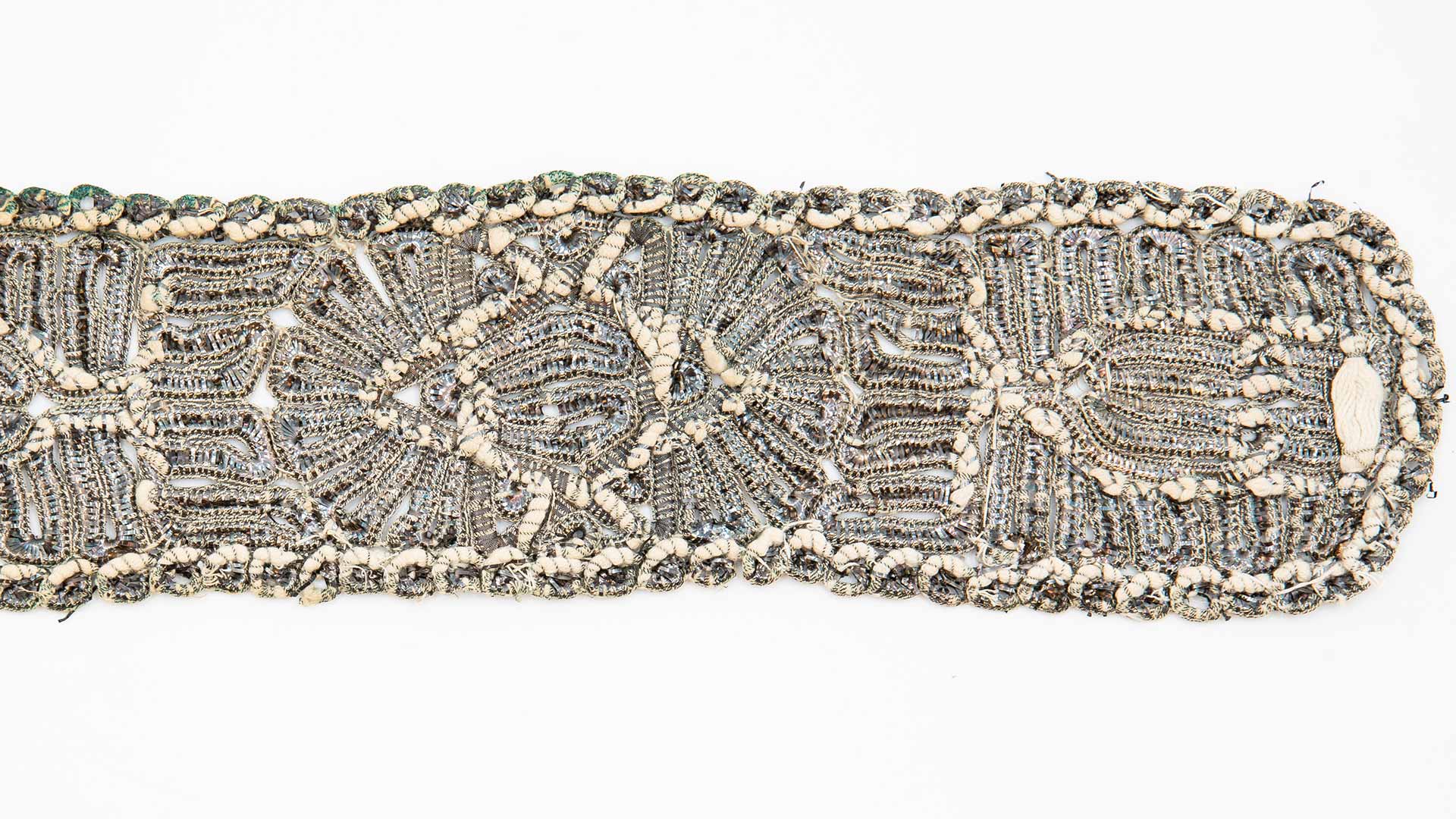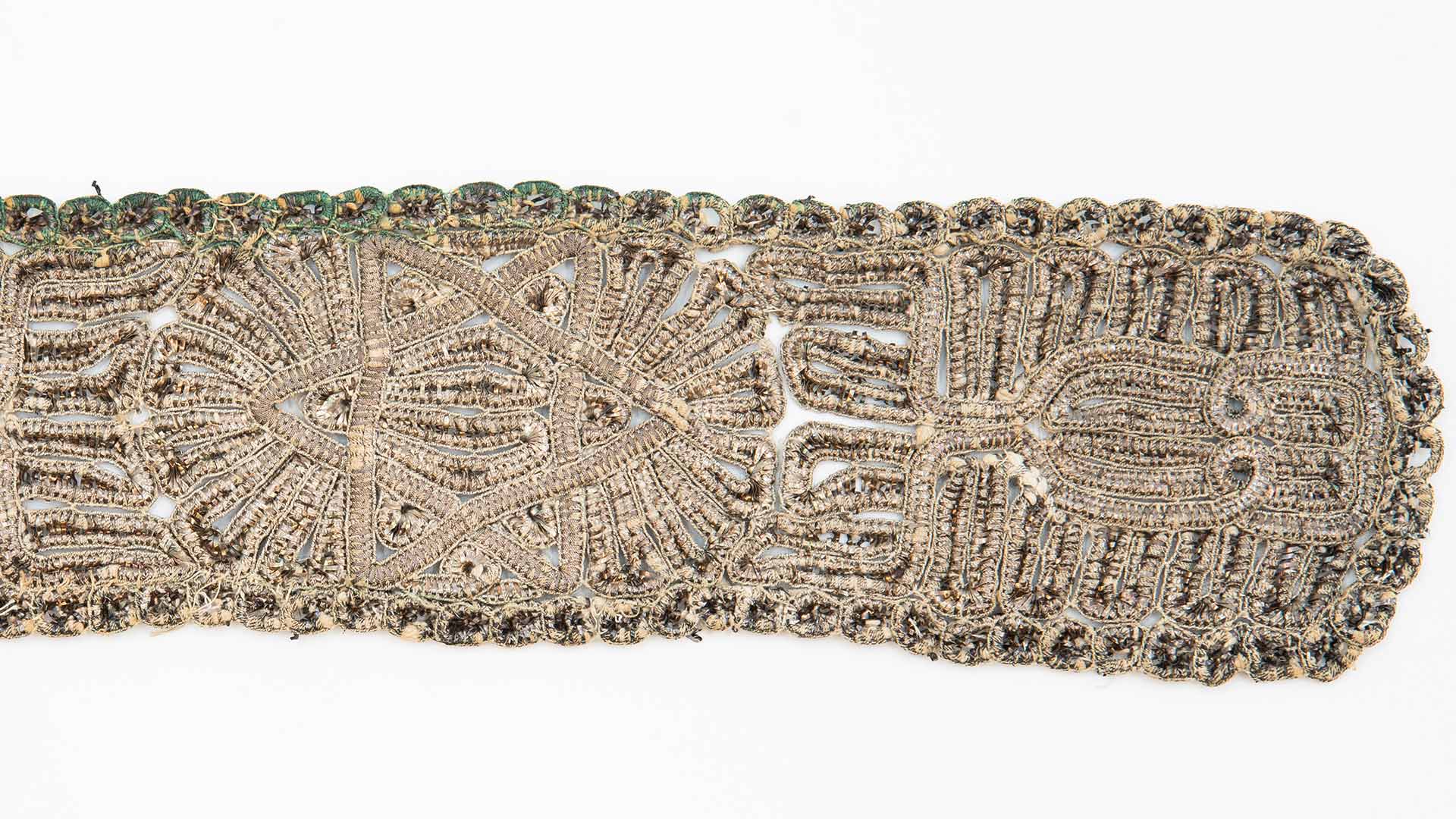
Featured Object: Atarah, Prayer Shawl Collar
- Post Date: 5/13/2024
- Author: Victoria Siek, student assistant
- Reading Time: 5 minute read
On May 6, 2024, Yom HaShoah or Holocaust Remembrance Day was commemorated by the world. This day of observance is held on the 27th day of Nisan, the first month of spring in the Hebrew Calendar. However, this date is different from International Holocaust Remembrance Day, which falls on January 27, the anniversary of the liberation of Auschwitz-Birkenau. Instead, the date of Yom HaShoah was chosen to coincide with the Warsaw Ghetto Uprising of 1943, when Jewish resistance fighters fought for freedom against the Nazis. Around the world, the Mourner’s Kaddish is recited and in Poland, thousands of participants from around the world march in silence from Auschwitz to Birkenau in the “March of the Living” to showcase the continued presence of Jewish life, despite Nazi attempts at their obliteration.
-
 Atarah, Prayer Shawl Collar Kraków, Poland Brass 19th century 1993.12.0003
Atarah, Prayer Shawl Collar Kraków, Poland Brass 19th century 1993.12.0003
This atarah from the late 19th century was used as a decorative panel to adorn the tallit (prayer shawl). The intricate metal embroidery of this atarah was created through a technique called shpanyer arbet. The word shpanyer is thought to have come from the Yiddish word ver shpinnen ("to spin"). It could also come from the word Shpanien ("Spain"), which could allude to the manufacture of gold and silver thread lace by the Jewish population in the early 15th century. Shpanyer work is extremely special because it is a technique exclusively employed by Jewish craftsmen for Jewish religious life. Other Jewish religious objects during the 19th and early 20th centuries demonstrated Jewish interaction with their environment, a partnership with religious identity and host country. However, religious objects adorned with shpanyer arbet uniquely showcase the independence and endurance of Jewish tradition. This craft was produced by Jewish people exclusively for Jewish use. This atarah represents the unique and vital culture of Jewish religious life.
All the information concerning the technique of shpanyer arbet originates to the town of Sasów, Poland (now Sasiv, Ukraine). The craft was introduced by Mordekhai Leib Marguiles, a Jewish man fleeing conscription from Russia. Shpanyer Arbet is created by a shpanyer machine, or small wooden table with a rotating drum and wooden framework hung with four bobbins. The bobbins were threaded with cotton or linen and then woven into a cord. Metal thread was then woven and braided across the cotton and linen cord, following a paper design set on the rotating drum.
Though we know this atarah was recovered from around Kraków, Poland, the exact original owner remains unknown. This is most likely due to the attempted destruction of Jewish life by the Nazis. Religious objects such as the atarah would have been separated abruptly in great numbers by the Nazis, whether to destroy Jewish culture or repurpose elements of the object for use on the war front. Given the time period, location, and valuable material of this atarah, it is likely that our lack of knowledge of its original owners stems from the attempted destruction of Jewish cultural life during the Holocaust. Even if we do not know if this object is directly related to the Holocaust, this uniquely crafted atarah serves as a testament to the vitality and survival of Jewish religious life. Jewish religious life is filled with unique events, religious artifacts, and beautiful tradition. This atarah is just one example of how beautifully complex Jewish culture was in the 19th century. Today, and especially in commemoration of Yom HaShoah, it is important to piece together the fragments of this often overlooked history in order to preserve the intricate vibrancy of Jewish life and reconstruct its cultural texts before World War II.
-
- Share:
- Subscribe to Newletter
- Giving

